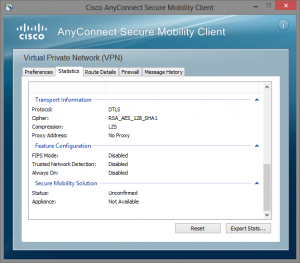Working with certificates time to time can be a little difficult, implementations differ and there are more than one certificate “formats”. This is also the case when it comes to importing a “pfx” archive to Cisco Prime Infrastructure (1.x or 2.x). If you search the web you will find a lot topics, but you will have to mix those together to get the job really done.
In this scenario you have a wildcard certificate and the private key combined together in a pfx archive (cert.pfx). You will need a openssl installation, the CA bundle (Root certificate and intermediates certificates, “CA-CERTS.CER”) which you can download from the certificate authorities website and these six steps:
1. Export the pfx archive to a standalone certificate and private key
openssl pkcs12 -in cert.pfx -nocerts -out key.pem
openssl pkcs12 -in cert.pfx -clcerts -nokeys -out cert.pem
2. Decrypt the private key
openssl rsa -in key.pem -out key2.pem
3. Convert certificate from pem to der format
openssl x509 -outform der -in cert.pem -out cert.der
4. Download the “CA-CERTS.CER”, “key2.pem” and “cert.der” files with FTP from the Prime CLI
5. Import the CA certs in Prime:
PRIME/admin# ncs key importcacert CA-CERTS CA-CERTS.cer repository defaultRepo
INFO: no staging url defined, using local space. rval:2
truststore used is /opt/CSCOlumos/conf/truststore
The NCS server is running
Changes will take affect on the next server restart
Importing certificate to trust store
6. Import certificate and private key
PRIME/admin# ncs key importkey key2.pem cert.der repository defaultRepo
INFO: no staging url defined, using local space. rval:2
INFO: no staging url defined, using local space. rval:2
truststore used is /opt/CSCOlumos/conf/truststore
The NCS server is running
Changes will take affect on the next server restart
Importing RSA key and matching certificate
7. Restart the NCS application, and drink a cup of coffee.. 😉
PRIME/admin# ncs stop
PRIME/admin# ncs start
